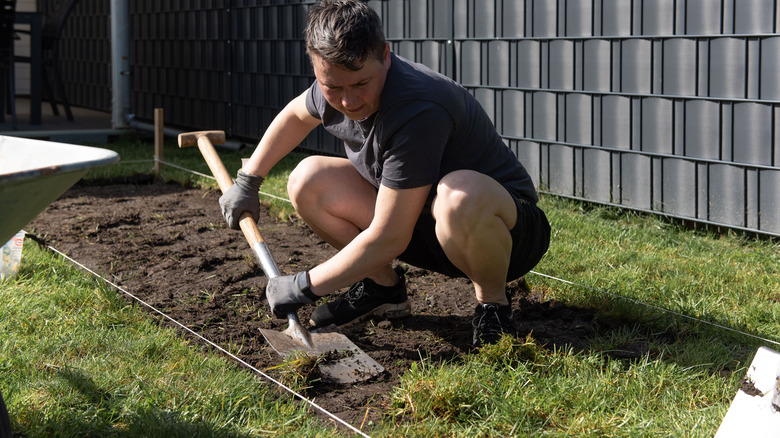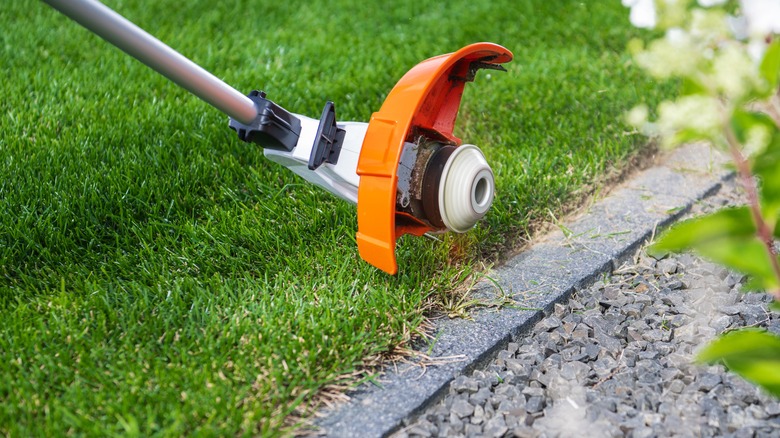Essential Tips For A Sharp DIY Lawn Edging
We may receive a commission on purchases made from links.
Sharp lawn and landscape edging can transform your yard from a bit of a wilderness to a well-manicured oasis. But doing it yourself? Well, that's where things get fun. Whether you're a seasoned green thumb or just someone who's tired of your grass giving the neighbor's dog a place to hide, you should always start with a plan, have the right edging tools, and account for future growth before diving into this activity.
Before picking up any tools, take a moment to visualize what you want your yard to look like. Do you want clean, straight lines or graceful, curved edges? Map out the areas that need edging, considering the layout of your garden and any obstacles under the ground like water pipes and electrical lines. Remember to account for the future growth of your border plants. Plants naturally expand over time, so leave enough space between the edging and the border plants to accommodate their growth. Sketch a rough design — don't worry, it doesn't have to be gallery-worthy — and decide on the materials and tools you'll need.
The right tool can make the difference between an efficiently smooth or a frustrating process. If you're cutting through thick grass or tough soil, a sharp straight-edged spade or half-moon edger will do the job. To create curved lawn edges, laying down a hosepipe or even a length of plastic landscape edging can give you a guide to ensure smooth lines. For straight bed edges, pegs (or even long nails) and some string is a great hack to get that perfect line in your lawn edging. Or, you can use the 2-by-4 plank hack to create a sharply-edged bed.
How to keep your edges neat over time
To reduce maintenance, consider installing permanent materials like plastic landscape edging, stone, brick, or metal along the edges. If you opt for plastic landscape edging, use a rubber mallet and heavy-duty stakes to install and secure it. For straight beds, be sure to use couplers for any right-angle corners.
Not a fan of plastic? There are endless other garden edging ideas to try, such as using treated timber planks to create a tidy edge, steel edging in bendable strips (that discreetly sit flush with the turf similar to plastic edging), or wide metal corrugated rolls, such as the Laveve Heavy Duty Edging. Edging that creates a solid barrier (whether made from steel, plastic, brick, or boards) is usually better for maintenance than something which can let grass roots through, like small stones.
With your lawn edges looking sharp, what's the secret to keeping them that way? Controlling overgrowth. Weed and grass can sneak back into your neat borders, even with edging materials in place, but adding a layer of mulch or using landscape fabric along the edges can stop them. You should also invest in a good-quality glass trimmer to cut back any overgrowth along the edges. Something like the Black and Decker Edger and Trencher can save a lot of labor during the growing season when you've got to actively prevent the grass from spreading into garden beds. Regular weeding is also essential, as weeds can undermine the sharp, defined lines of your lawn edge.

